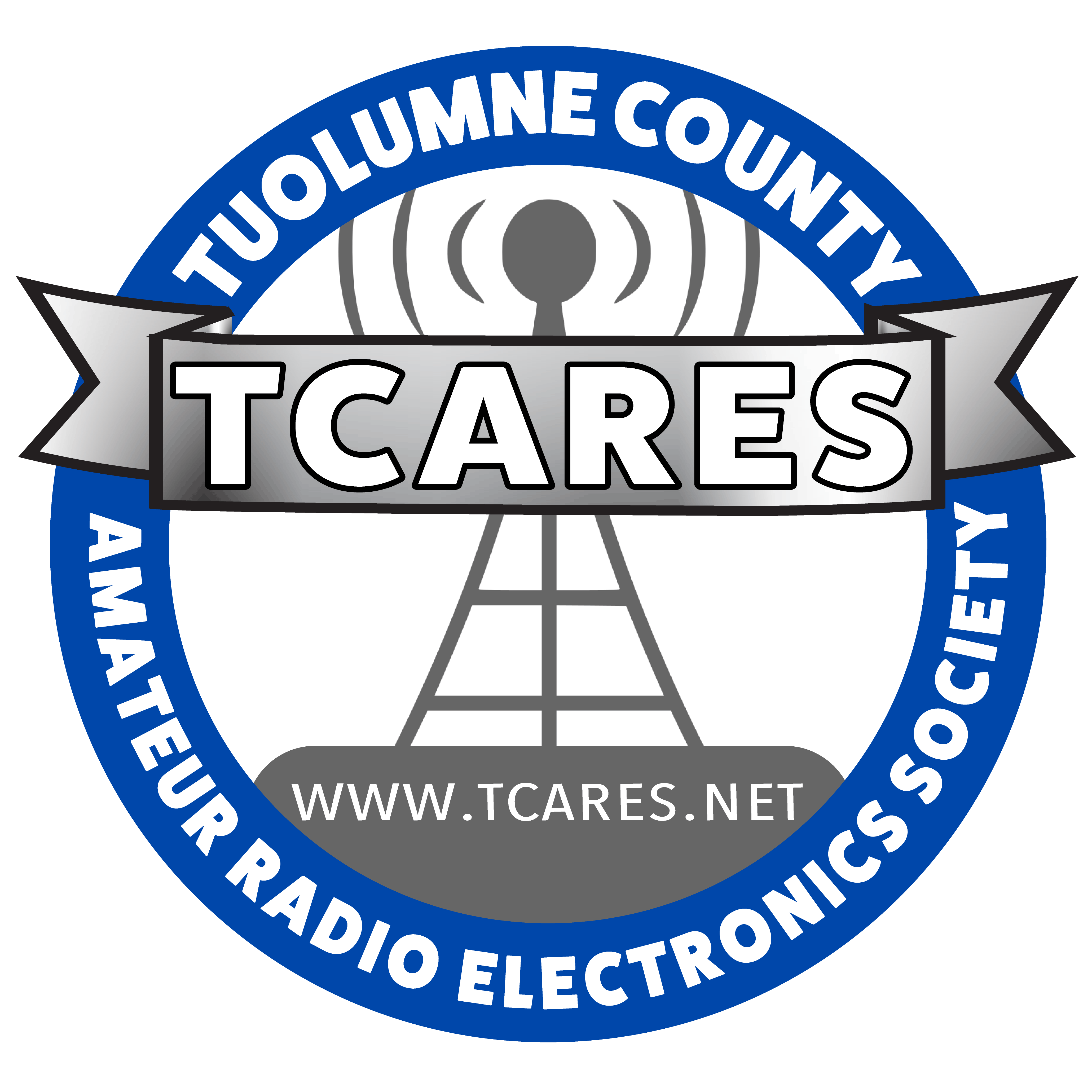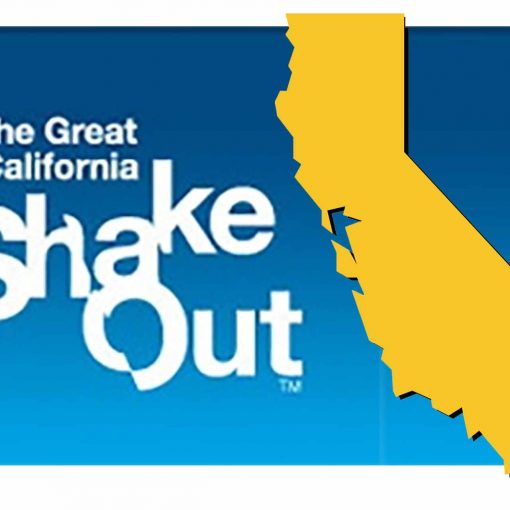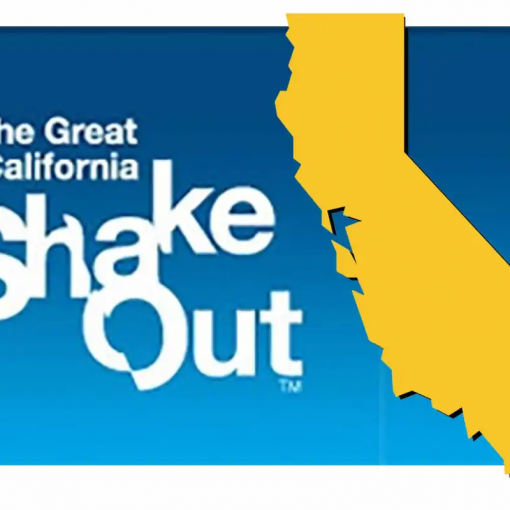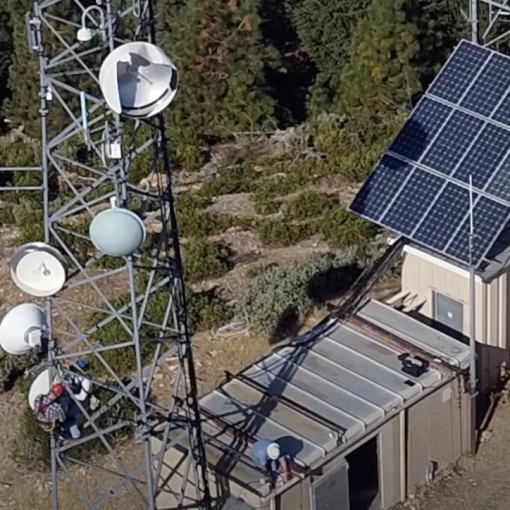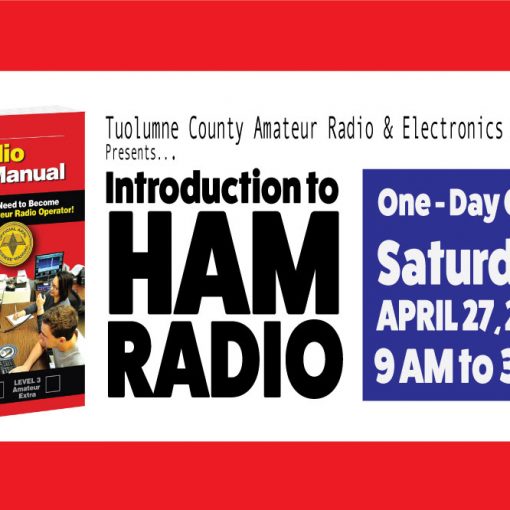Disaster Communications Exercise 5 May 2020
After Action Report
Executive Summary
By
Jim Piper K6MED
DST Radio Communications Volunteer American Red Cross CA Gold Country Region
The DST Radio Communications component of the CA Gold Country Region “activates” during disaster responses to augment communications between the headquarters DOC in Sacramento and service sites. It does so by way of coordinating with our partners in the amateur radio community to “be there” when we need them to assist in moving our disaster messages when the public telecommunications infrastructure has suffered an outage from a disaster and Red Cross or public utility response teams are not yet in place.
Successful exercises lead to an ongoing program of process improvements. This report is intended to assist agencies striving for preparedness excellence by analyzing exercise results and:
- Identifying strengths to be maintained and built upon.
- Identifying potential areas for further improvement.
- Recommending exercise follow-up actions.The suggested actions in this report should be viewed as recommendations only. Our partners might identify alternative solutions that are more effective or efficient. Each partner group (Amateur Radio Emergency Service, amateur radio clubs, and autonomous groups) should review the recommendations and determine the most appropriate action and the resources needed (time, staff, resources) for implementation.On 30 May 2020, the Amateur Radio Emergency Service and autonomous amateur radio clubs participated in a communications exercise. This particular exercise was organized in two parts, A and B. Part A was a CA Gold Country Region exercise and Part B was a “cross-country” exercise. The former was planned with a scenario of local region choosing and involved moving messages from simulated shelters to the Sacramento DOC1. The latter was planned on the premise of widespread grid down scenarios where Region HQ messages to Red Cross national headquarters would need to be sent by way of RF circuits.1 The DOC was simulated. The Red Cross radio net control point was the private radio station of a Red Cross volunteer.
Participating individual members were provided with lengthy messages in the form of text files that they were asked to send by way of radio to our region’s radio email address.
Amateur radio operators in Humboldt and Del Norte counties participated with the assistance of operators in Brookings, Oregon to relay messages into the Winlink Global Radio Email (“Winlink”) system.
Background
As a local resource for communications, the American Red Cross is partnered with the amateur radio community and the Amateur Radio Emergency Service (ARES) by way of a Red Cross-ARRL Memorandum of Understanding. It is recognized that the ARES organization, consisting of independent units, has varied levels of training in and readiness for disaster communications. This exercise helped foster the relationship between and provide a training opportunity for the Red Cross and radio operators licensed in the Amateur Radio Service.
Due to terrain variances across the Gold Country Region, cellular telephone service varies from excellent to non-existent on a normal day. When the Red Cross initially responds to a disaster in which the public telecommunications infrastructure is interrupted, there is an inherent latency between the time when the Red Cross initially responds and when the resources for a temporary infrastructure can be set in place. The latent period can be as much as 96 hours.
Goal/Objectives
The CA Gold Country Region DST communications team established the following goals and corresponding objectives for this exercise. All exercise goals were demonstrated during exercise play and ultimately accomplished. Through demonstration of these objectives, the exercise players successfully simulated an effective response to scenario events. At the same time, exercise play revealed ways that future responses could be made more effective.
The overall objective was to train ham radio operator participants and exercise wireless (radio) disaster communications between Red Cross service sites and the headquarters DOC and/or a district operations center. Meeting this goal would create resources that could be put into play during the period between when the telecommunications infrastructure suffers an outage and when auxiliary telecommunications resources (e.g., ARC DST ground stations and/or Verizon, AT&T, or other provider response responses) are brought to bear.
End results of this exercise were anticipated to have provided radio operators with:
- An understanding of the nature of Red Cross disaster message traffic.
- Experience in passing short disaster traffic best suited for handling over a voice channel.
- Experience in passing message traffic of greater than 25 words and/or traffic that requires precision over digital communications paths, using the Fast, Light Message (“flmsg”) utility and Red Cross forms and Winlink.
- Demonstrate to Region leadership the practical value of using radio to manage short and medium haul digital communications to help manage the early hours of a disaster response before Red Cross DST and/or Red Cross telecommunications partners have (re)established cellular and data (Internet) services to Red Cross district operations center(s) and services sites.StrengthsKey strengths identified during this exercise include the following:
- The participants demonstrated excellent teamwork.
- New cooperative partnerships were established between Red Cross California Gold Country Region and the amateur radio clubs in Humboldt and Del Norte Counties and the amateur radio club in Brookings, Oregon.
- A renewed cooperative partnership was established with the Amateur Radio Emergency Service (ARES) groups of Tuolumne County, Sacramento County, Yolo County, Placer County, Nevada County, El Dorado County, and the Lake Tahoe basin.
- All participants successfully used the Winlink radio email system to exchange messages with Red Cross.
- While simulating a public power and telecommunications infrastructure outage, autonomous ham radio groups in Humboldt and Del Norte Counties successfully exchanged messages with Red Cross. Notable was the cooperation of amateur radio operators in Oregon who provided assistance and their flexibility in meeting the challenges of the exercise.
- Despite poor high frequency operating conditions, ham stations in Humboldt County and Oregon were able to exploit frequencies in the 7.1 MHz range to send and receive messages using Winlink.
- This exercise is the first exercise in recent history to send and receive Red Cross-specific messages from the far reaches of the CA Gold Country Region. Especially important in the resulting successes of this exercise is the demonstration of the ability to ensure communications between Red Cross headquarters in Sacramento and the newly added north coastal counties during a telecommunications infrastructure outage.
- Notable is the now demonstrated ability of the participating amateur radio operators to immediately respond to a call for assistance and to rapidly move messages when called upon.
Areas for Improvement
Through the exercise, several opportunities became apparent for further training for those amateur radio community members who are interested in supporting Red Cross disaster communications.
In advance of the exercise, the amateur radio operators who indicated interest in participating were sent an exercise plan. This plan included the nature of the Red Cross messages they would be provided (text object files created by the “flmsg” utility) and the email client, that is, Winlink, and email address to which we wanted the messages sent. In a few cases, the participants were unfamiliar with Winlink or how to attach a file to a Winlink email message.
It is apparent the amateur radio community interested in supporting disaster communications be afforded training opportunities to:
- Become proficient using the Winlink Global Radio Email program and other digital communications tools such as the Fast, Light Digital Modem Application (“fldigi”).
- Become familiar with using flmsg (the utility deployed in the CA Gold Country Region) in support of non-ham originated messages.
- Further advance communications skills operating over HF radio paths.
- Increase familiarity with the disaster communications needs of the RedCross.
- Engage in cooperative training exercises with the Red Cross.Seven Red Cross personnel composed messages, four of whom used the flmsg utility. Three created the necessary text object files. [flmsg source files are HTML forms that are too large to send without consuming an excessive bandwidth in the time domain. Flmsg reduces these files to less than 1.5 kb facilitating their easy management over an RF digital circuit.]It is further apparent that the use of flmsg for initiating disaster messages in the absence of access to the telecommunications infrastructure be afforded to Red Cross management and supervisory personnel.The concept for this exercise originated with a few Red Cross DST Radio Operator/ hams in the eastern part of the country. Participation was initially expected to be limited. However, after announcement of the planning to the American Radio Relay League, the amateur radio operators requesting to participate grew to over 500. As a result, the planning process developed some issues that are beyond the scope of this AAR. Those issues had impact on our planning for our “Part A” regional exercise that brought amateur radio operators into the play who were not planned to be participants. Future exercises will require “tighter” participant management to ensure that all get copies of exercise planning documents to ensure full training benefit from the exercise.
Corrective Action Required
A couple of the flmsg forms used in the exercise (Parts A and B) were found to be defective due to some mis-coding of the HTML used in their creation. Unfortunately, these forms have been deployed throughout the CA Gold Country Region and will need corrective action that will necessitate recall of the flash drives in the disaster trailers and sending (via email) revised forms with instructions to the Disaster Program Managers and DOC management staff.
1. Exercise Overview
Name
CA Gold Country Region Disaster Communications Exercise (CommEx)
Duration
3 hours
Exercise Date
30 May 2020
Type of Exercise
Full scale exercise
Focus
Response
Locations
Humboldt, Del Norte, Yolo, Sacramento, Placer, Nevada, El Dorado, Tuolumne Counties and Lake Tahoe Basin
Participants
CA Gold Country Region Red Cross:
Disaster Program Managers, Red Cross Radio Specialist volunteers, shelter manager volunteer, Disaster Health Services volunteer
Amateur Radio Service
- Amateur Radio Emergency Service partners Sacramento, Yolo, Placer, Nevada, El Dorado, Tuolumne County, Tahoe Basin
- Humboldt Amateur Radio Club (HARC)
- Del Norte Amateur Radio Club
- Pelican Bay (Oregon) Amateur Radio ClubExercise ScenariosScenarios were kept basic due to the goals of exercising radio communications for disaster support.
- Seismic event off-shore from Eureka with accompanying 15-ft tsunami that heavily affected public works infrastructure including telecommunications and power for the communities of Eureka and Crescent City. Simulated shelters included the high schools in each city.
- Wild-land fires in Butte and Tuolumne Counties affecting public utility power and telecommunications. Simulated shelters included Butte County (Gridley, CA) and Motherload (Sonora) fair grounds.Primary message traffic for the exercise consisted of passing a minimum of two messages as a populated Red Cross .k2s text object file form as an attachment to a Winlink email addressed as ka6arc@winlink.org or “SACARC” (a tactical address) to the Red Cross DOC in Sacramento. At least one of the messages required a response from Red Cross (the Red Cross ICS-213 is the only form that has a response field). All messages, whether by voice or digital circuits were to contain the statement “this is a drill this is a drill.”Exercise EvaluationThe exercise was designed to provide participants with an opportunity to assess current capabilities to perform the critical tasks required to respond to a wide-area telecommunications infrastructure outage. Through assessment of those capabilities, participants identified strengths, weaknesses, and future training needs.Exercise evaluation is based on the following metrics:
- Number of Operators
- Organizations Involved
- Number of messages sent and received (Red Cross ICS213’s, Disaster Requisitions 6409s, and Staff Requests)
- Power source (PG&E, batt/ battery + solar, generator)
- Message integrity
- Success using Winlink to pass an flmsg object file
- Alternate methods to pass flmsg object file in absence of Winlink capability
- Number of non-ham Red Cross participants
- Number of non-Red Cross amateur radio operator participants
- Transmitting at least one message requiring response from HQ
- Repeater and vault disaster hardening
- Power sources for repeaters used
- Power used/capabilities for base stations
- Work-arounds and thinking out of the box to move trafficNote
Radio Communications in the CA Gold Country Region can be particularly challenging due to extreme variances in geological topography, HF propagation conditions, and availability of VHF and UHF radio repeaters (both induvial and linked).
Due to the topography between the northern coastal counties and the Sacramento DOC, as of this report, there are no linked VHF or UHF repeaters available for voice communications. As a result, the Red Cross radio controlling station in Humboldt County managed voice communications for the area. Communications between the Humboldt County control station and the Sacramento DOC were managed over a Winlink digital circuit.
| # of Red Cross Hams Participating 8 |
| # of ARES Hams participating 40 |
| # of Non-ARES Hams participating 12 |
| # of Red Cross Regions supported by ARES 1 |
| # of ARES Sections Participating 2 |
| # of Stations on Emergency Power 39 |
| Number of Cities involved during exercise 6 |
| Number of counties involved during exercise 6 |
| Number of States involved 2 |
| Number of Stations connected: 40 |
| # of messages passed digitally 66 |
| # of analog (voice) messages passed 35 |
| Bands used |
| repeater(s) 4 (networked system) |
| analog 30 (voice) |
| digital 2 (HF & VHF) |
2. Exercise Synopsis of Events
At approximately 0830 hours on the day of the exercise, participants were sent the Red Cross messages to their personal email accounts. These messages were intended as virtual flash drives to simulate what they might otherwise be handed at a Red Cross service site.
Commencing at 0900 hrs on the day of the exercise, the Red Cross control station operator (tactical call “Red Cross”) called role to ascertain which radio operators were “on the air” who had previously signed up to participate. Out of approximately 50 amateur radio operators who indicated that they intended to participate, approximately 40 responded to role call. Eight additional radio operators who were not originally participants “checked in,” indicating their availability and desire to participate. These individuals were sent the Red Cross flmsg messages to their personal email accounts with instructions to send them back to Red Cross over an RF circuit.
At approximately 1030 hours an inject message was sent to participants for forwarding to the Sacramento DOC.
From approximately 0930 until the conclusion of the exercise, members of the amateur radio community at large who had heard of the exercise checked in with the Red Cross radio operator to announce their willingness to participate in the exercise. Others sent a Winlink email message to similarly participate (their messages were not the Red Cross exercise messages).
3. Analysis of Outcomes
This section of the report analyzes how well the participating amateur radio operators in the region achieved the expected outcomes in their response to the scenario simulations. This analysis focuses on outcomes rather than processes. The mission outcomes are actions that CA Gold Country Region disaster management might expect from both DST radio communications volunteers and our partners in the amateur radio community.
Direct Response of Non-Red Cross Participants
Most of the participants were Amateur Radio Emergency Service members of various skill levels and training. Others, notably, in the NW coastal counties were radio club members, unaffiliated with ARES, were interested and self-trained for disaster communications. Without their direct involvement with personal communications equipment this exercise would not have been possible.
Direct Response of Red Cross Participants
Six Red Cross participants were a combination of staff (3 Disaster Program Managers) and volunteers (3 radio operators, a DHS nurse, 1 shelter manager). These participated in support roles (authoring messages and coordinating) and radio operation.
Conclusions
This exercise is the second in this reporter’s tenure (6 years) with the Red Cross CA Gold Country Region). The first was Operation Pineapple an exercise in 2015 shelter in which nine shelters were opened from mid to the southern boundaries of the
region. Though amateur radio was not a planned participant for the exercise, the ARES community was invited to participate. Operation Pineapple demonstrated that communications exclusively over voice circuits could not be relied upon to accurately and dependently manage Red Cross disaster message traffic.
Over the ensuing years communications over digital circuits has been emphasized. Certain Red Cross disaster forms, otherwise available on the Exchange repository, were identified as important for managing certain messages of such priority or urgency that they would need to be communicated regardless the state of the public telecommunications infrastructure. Due to their inherent size as Microsoft Word and PDF files, these forms would require an inordinate amount of time to transmit and receive. To solve this problem, the facilities of the flmsg application were exploited to significantly reduce, by nearly an order of magnitude, to transmit and receive over a digital radio circuit.
The participating radio operators demonstrated a high degree of resource (both personnel and equipment) availability, to assist the CA Gold Country Region in moving disaster-related messages from service site point of origin to the Red Cross DOC in Sacramento.
Using the skills proficiency in their craft, these operators further demonstrated with a 100% degree of success the ability to send the messages given them to destination email addresses. Admittedly not all operators involved were proficient using the flmsg application and Winlink together, or in some cases individually, or in the use of the fldigi application. It is in this latter area that further training and practice will hone these skill sets so that we will better be able to depend on them as valuable partners.
Respectfully
Jim Piper
DST Radio Communications Volunteer American Red Cross CA Gold Country Region
